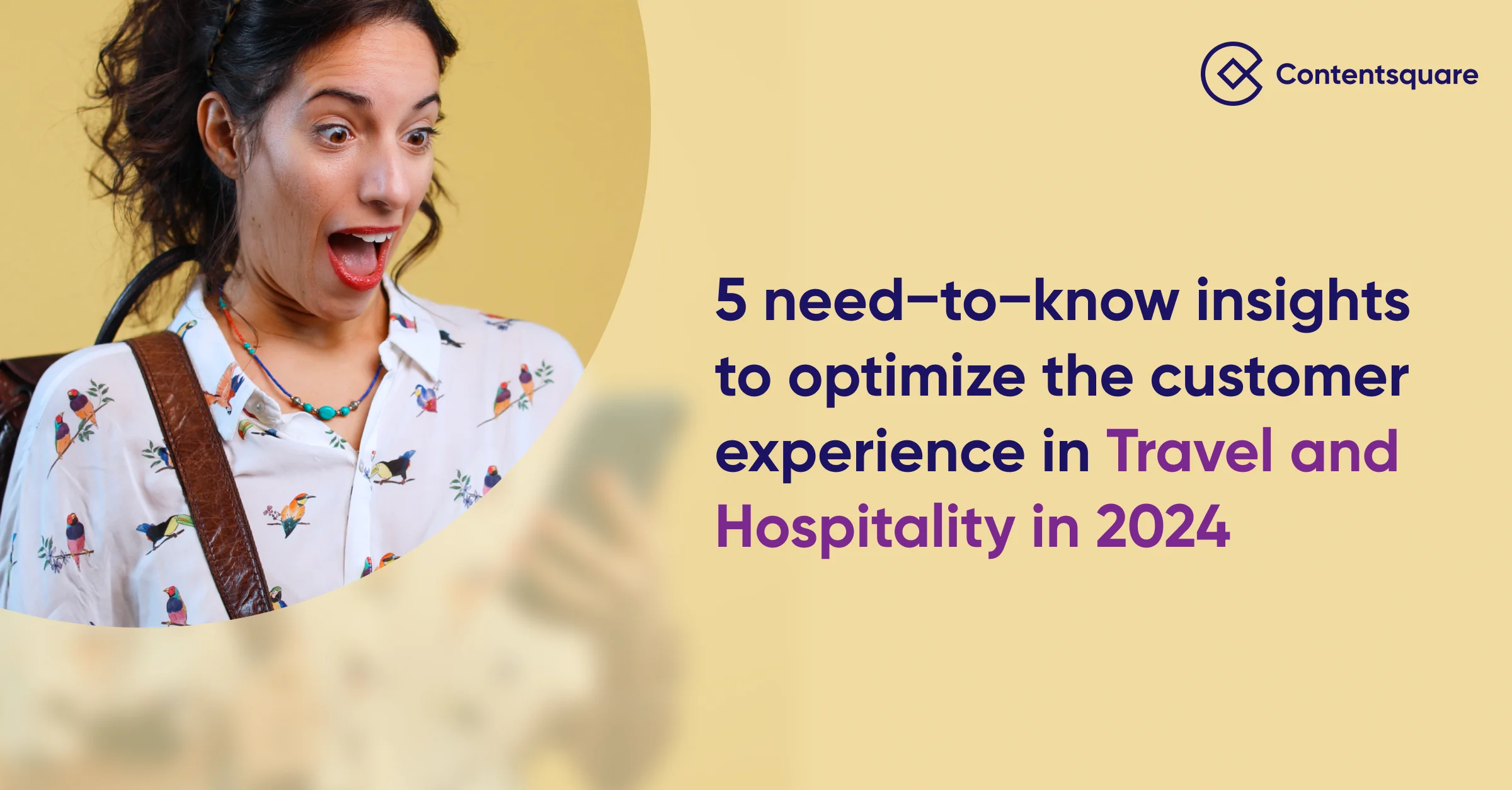3 Tips for Developing a Customer Journey Optimization Strategy

In addition to the fundamentals of following UX/UI best practices and creating accessible experiences, the answer lies in merchandising that is optimized to feature content that resonates with the customer. With this challenge in mind, here are 3 tips for developing a customer journey optimization strategy.
1. Understanding the customer journey matters
Understand where customers are landing on your website, and how these landing pages impact key site metrics like bounce rate and activity rate. Contentsquare research shows that in 2020, approximately 47% of website visitors abandoned their journeys after viewing just one page on a website. By analyzing how visitors move through your website, it is easy to identify top landing pages by device, acquisition source, or customer type to determine which landing pages have the lowest bounce rate and to minimize friction points for conversion. You can then dive deeper (for example, using our page comparator tool), to understand just how engaged customers are with those various landing pages, and adjust your acquisition and retention strategies accordingly.
It is important to remember that different types of customers experience different journeys and have different on-site triggers to drive purchasing. Just as you would craft an email or retargeting strategy, you can craft your site strategy to foster higher customer lifetime value, higher AOVs, and brand loyalty by identifying and driving key journey paths.
It is also crucial to remember that device type impacts the journey and that desktop and mobile should be evaluated separately. Since traffic continues to be driven primarily on mobile devices, where real-estate is much more limited, prioritizing content that drives engagement is even more imperative. Our 2021 Digital Experience Benchmark Report revealed that mobile traffic increased YOY by 16%, jumping to 65% of the traffic share across industries and accounting for over 70% of traffic in industries like apparel and luxury.
2. Determine how visitors interact with top landing pages
We found that across industries, around 45% of all content goes unseen. To calculate the percentage of content that goes unseen by site visitors, we compare the total number of pages on a site to the number of pages not viewed by 95% or more of traffic.
Identify what content is engaging to the customer and make sure that the most attractive content is at the top of the page, where exposure rate is highest. Using Contentsquare’s zoning analysis tool, you can craft page layouts that are engaging and intuitively drive activity.
Just because content looks good or is an exemplary depiction of your brand, does not mean that it will resonate with your customer digitally. Rely on metrics like attractiveness rate, click rate, hover rate, and conversion rate per click, to build pages that help you to achieve high-level goals and micro-goals on-site.
And lastly…
3. Use in-page insights to inform your larger marketing strategy
Every interaction a visitor has on-site can teach you something valuable about your customer’s behavior overall. A granular analysis of customer behavior in relation to specific site elements tells you which pieces of content and element types are resonating with your customer and which are not. Test prioritizing content that drives good customer behavior, like clicking, in your emails, retargeting ads, and social content. On average across industries, it takes an average of 2 sessions to get a customer to convert — using content that knowingly drives engagement post-visit, can help to drive customers back to purchase.
Are you looking to make data-driven decisions about your digital customer experience and take a more strategic approach to customer journey optimization? Learn how Contentsquare can help your business use experience behavior analytics to build better digital experiences.



